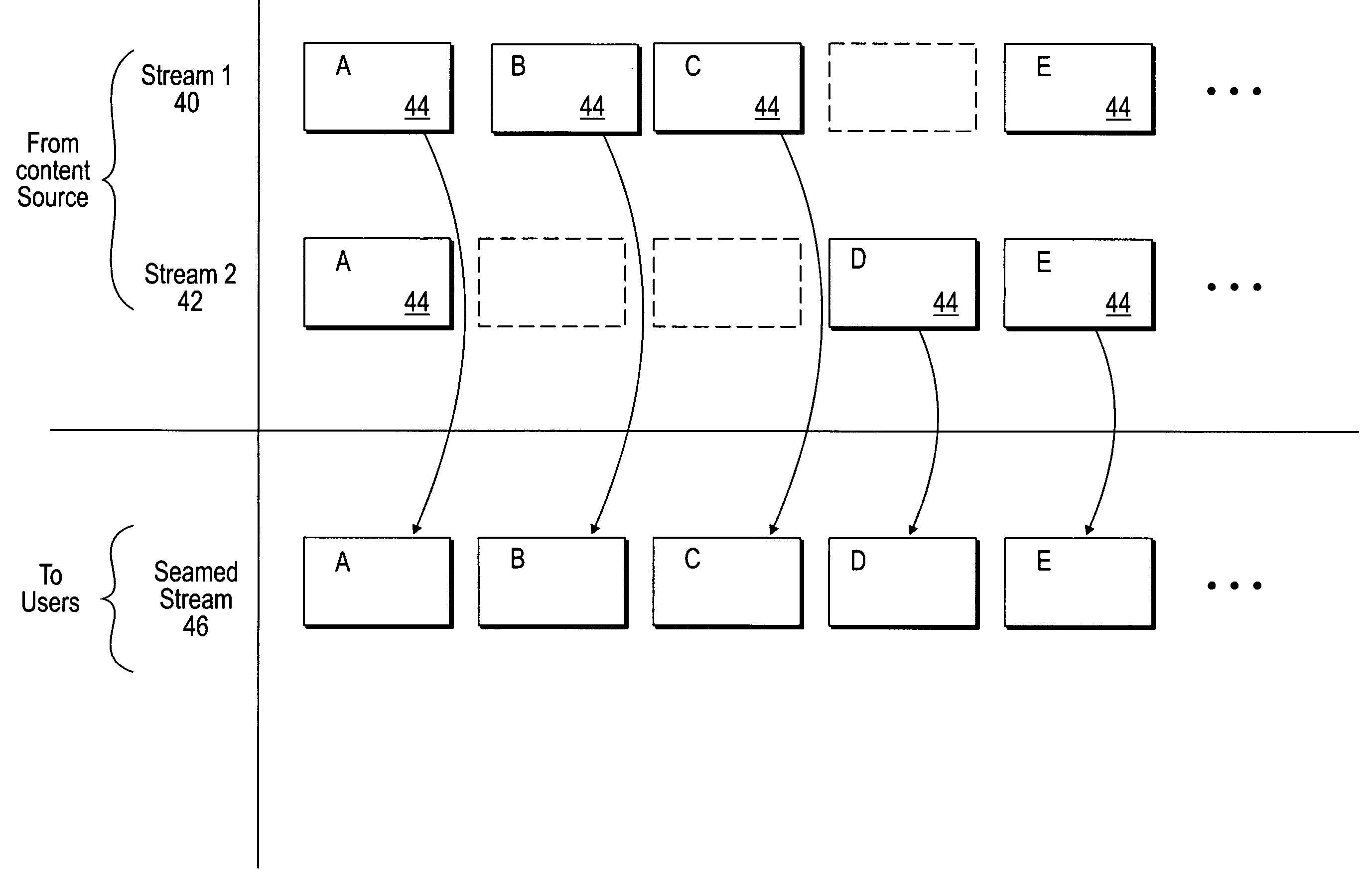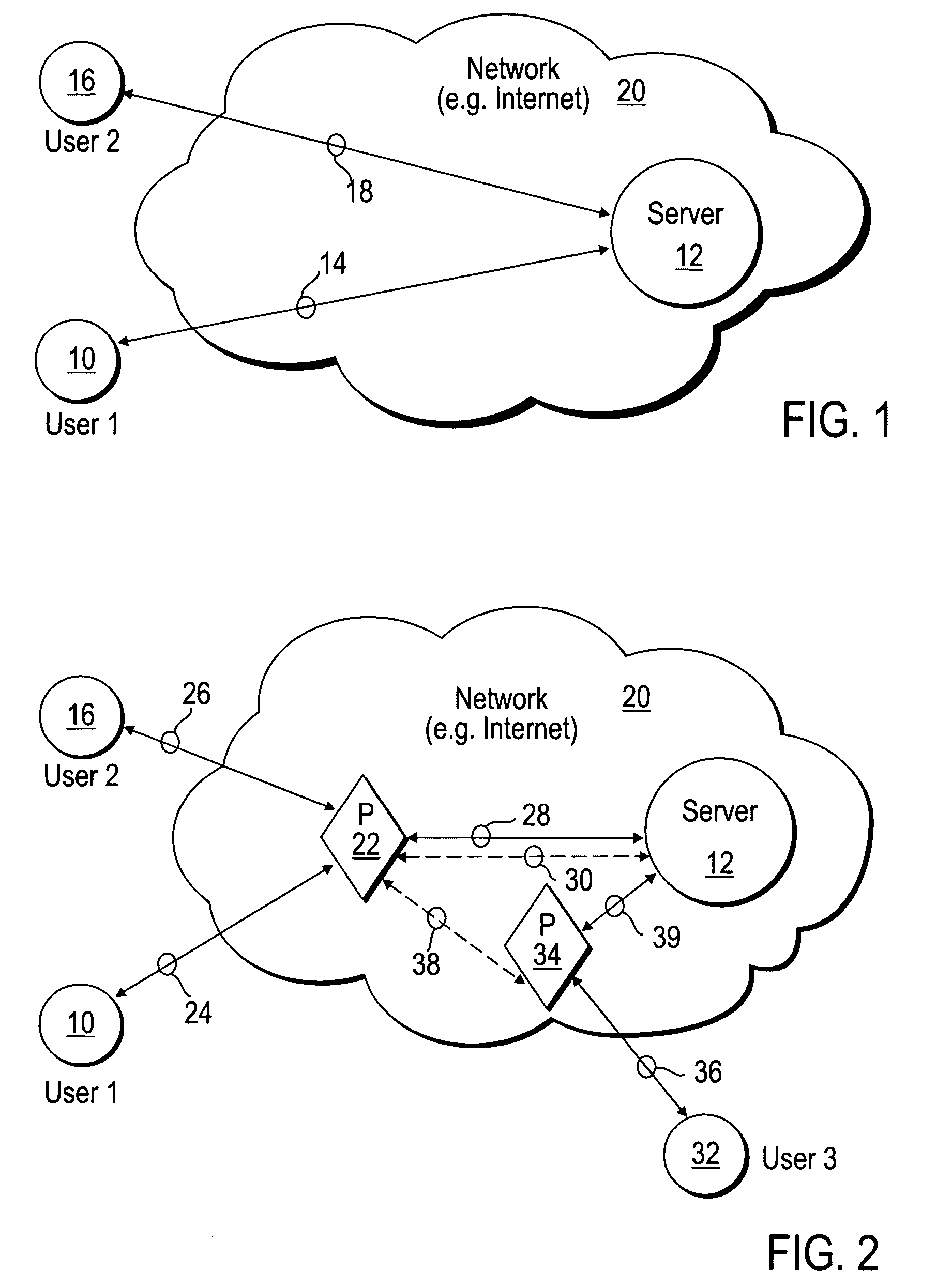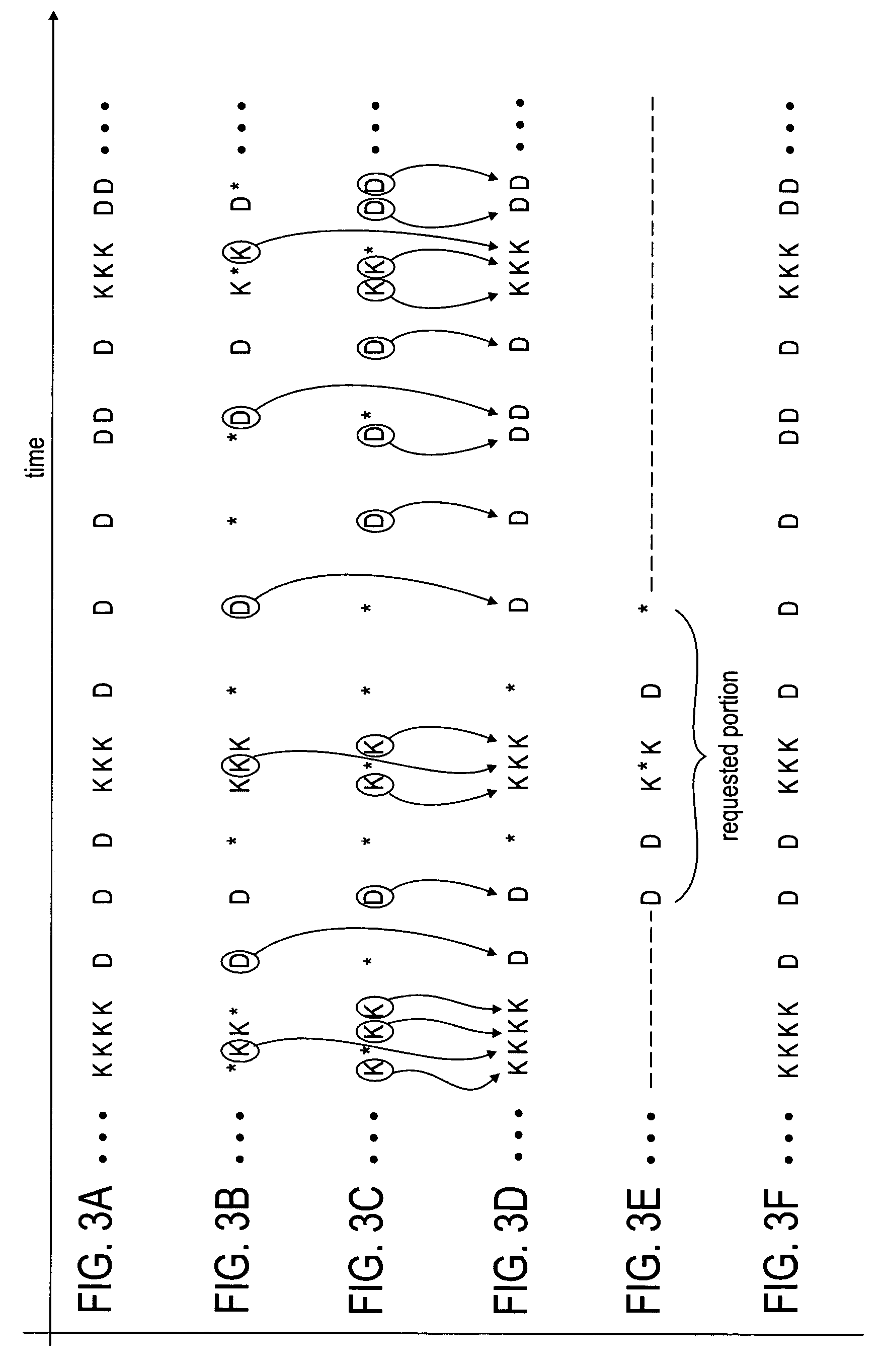Method for real time protocol media recording
a protocol and media recording technology, applied in the field of real-time protocol media recording, can solve the problems of user delay, limited internet bandwidth, and inacceptable user delays
- Summary
- Abstract
- Description
- Claims
- Application Information
AI Technical Summary
Benefits of technology
Problems solved by technology
Method used
Image
Examples
Embodiment Construction
[0110]Disclosed herein is a scheme for recording and playing back streaming content downloaded over a public network or network of networks such as the Internet. In essence, a proxy (transparent or explicit), which may be associated with a cache, is introduced between a content source (e.g., a server) and one or more clients (e.g., Web browsers configured to play streaming content or other multimedia viewers), preferably at a location that is close (e.g., physically or logically) to the clients. Herein, the term proxy is meant to describe and / or refer to a device that resides logically between client and a server, or other content source, and that processes information flowing there between in some manner. Proxies may be physically co-located with clients and / or servers and / or may be stand-alone devices. A data stream from the source is received at the proxy and from there is routed to the requesting client. En route, the stream can be stored (e.g., recorded on a computer-readable m...
PUM
 Login to View More
Login to View More Abstract
Description
Claims
Application Information
 Login to View More
Login to View More - R&D
- Intellectual Property
- Life Sciences
- Materials
- Tech Scout
- Unparalleled Data Quality
- Higher Quality Content
- 60% Fewer Hallucinations
Browse by: Latest US Patents, China's latest patents, Technical Efficacy Thesaurus, Application Domain, Technology Topic, Popular Technical Reports.
© 2025 PatSnap. All rights reserved.Legal|Privacy policy|Modern Slavery Act Transparency Statement|Sitemap|About US| Contact US: help@patsnap.com



